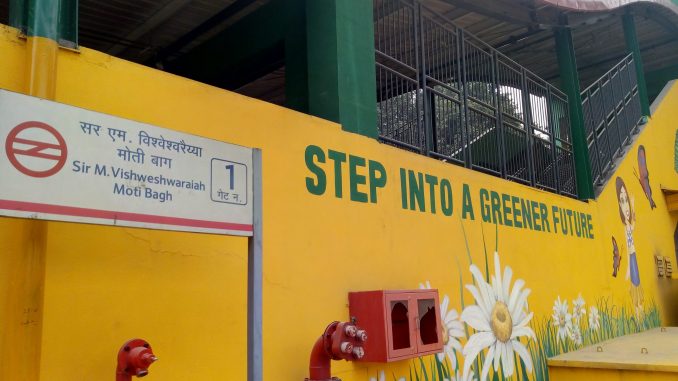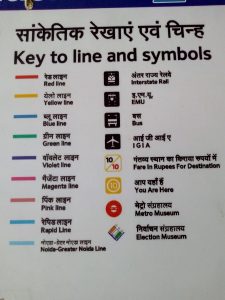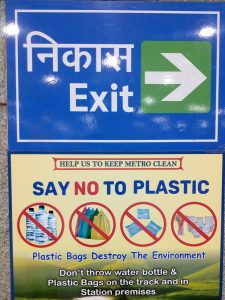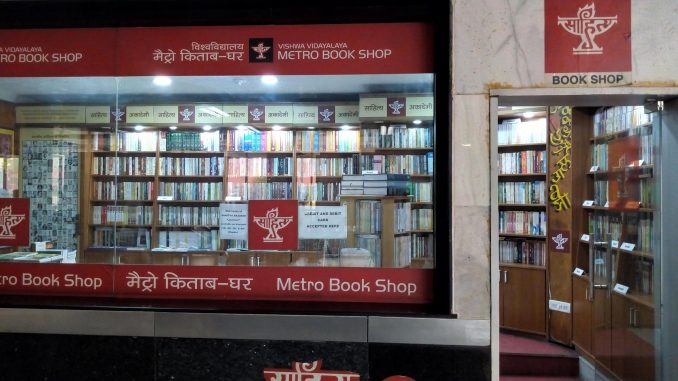First things first: The headline of this blog is not the title of an upcoming movie!
This script was conceived during a pollution-free ride —amid a haze of smoke outside—from New Delhi (railway station) to Chandni Chowk—a buzzing marketplace in old Delhi that has withstood the test of time for centuries.
These words echo the lore of a blockbuster that has been running to packed houses (read coaches) day after day, year after year, in one of the world’s busiest urban agglomerations.
Delhi Metro, as the phenomenon is commonly known, is not merely a means of mass rapid transit; it can be termed a movement bordering on a revolution!
To a visitor, the Delhi Metro appears to be the lifeline of the burgeoning metropolis, silently moving a few millions in the bustling city and its periphery. Its stations are teeming with thousands on the move, for work or for leisure, for errands or for visits, or for any other purpose.
With its speed, reliability, comfort and affordability, it has transformed the way people commute across India’s National Capital Region or NCR. Its vast array of tracks—both underground and elevated—has changed the landscape.

Moti Bagh Sir MV Station
The eco-friendly option stands out as a ray of sunshine amid the dark clouds (read ‘polluted air’) of October–November. It has effortlessly removed thousands of private vehicles off the congested roads.
New Era
As the train departs and as one settles down in a seat, one can browse the official website of Delhi Metro Rail Corporation Ltd. Yes, the mobile signal works almost everywhere, even in underground stations and inside trains!
Registered in 1995, the company was headed by E. Sreedharan, a visionary technocrat who led the team from the front. Construction began in 1998. As early as in 2002, the first train chugged along from Shahdara to Tis Hazari. The massive network covers 389 km with 285 stations (including Aqua Line that is the Noida-Greater Noida corridor and Rapid Metro in Gurugram). It is set to expand during the upcoming Phase 4 of the project.
How the project was executed speedily while overcoming the toughest of challenges is the stuff of legends, but that is a tale to be told another day!
For now, the focus is on the operations that will delight any practitioner of 5S and Lean—two popular Japanese management concepts.
Customer Delight
The metro’s effectiveness and efficiency is to be experienced to be believed! Earmarked spaces for e-rickshaws and pay-and-use toilets, ticket counters and vending machines, baggage handling and security frisking, appropriate signage and detailed maps, clean platforms and working escalators, clear announcements and discounted tickets—the metro seems to have it all.
The lines are colour-coded; they are found in magenta, yellow, blue, violet, purple and other hues. Footprints of the respective colour guide you to the right platform.
Over 300 train-sets of four, six and eight coaches crisscross the lines at an astounding frequency while maintaining punctuality. The inter-change stations help you to seamlessly shift to trains going in different directions.

Lines and symbols
Air travellers can zoom from New Delhi to Terminal 3 of the airport in 17 minutes flat through an express line. They can even avail check-in facility at the station.
To visit the Gandhi memorial at Rajghat, take the metro to Indraprastha, use the skywalk to cross the Ring Road and board a ‘Mudrika’ bus. For Baha’i House of Worship or Lotus Temple, alight at Kalkaji Mandir station. Head to the INA station in the heart of the city for DilliHaat, a must-visit place to procure handicrafts and handloom items and savour cuisines from every part of the country.
Beyond Travel
The metro’s impact on Delhiites and their neighbours, though, extends beyond travel. It seems to touch so many other aspects of their lives. Socially relevant messages abound on the coaches and at the platforms.

An anti-plastic poster by a platform
Situated in the cultural hub of New Delhi, the Mandi House station has a rich display of photographs. Two exhibits with the themes ‘Women during Partition’ and ‘My heart belongs in Delhi’ have been set up at the platform.

Photo exhibition at Mandi House station

Sahitya Akademi-run book shop at the Vishwavidyalay (University) metro station
And when one continues the onward journey to Vishwavidyalay (university) metro station and lands in a Sahitya Akademi-run book store that sells literary works in languages as diverse as Bodo, Tamil, Marathi and Santhali, one knows that the world has truly arrived!
Yes, the Delhi Metro is a good example of what we Indians are capable of – provided we have the leadership of people like Sreedharan.